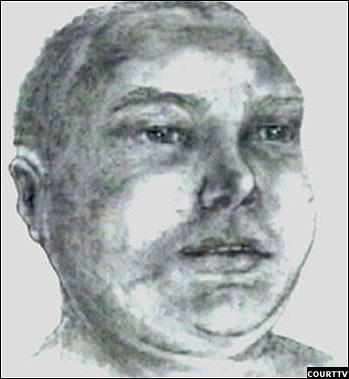
To help identify the victim, who was carrying no identification,
police made this sketch. William
McGuire's Navy buddy recognized him and phoned authorities.
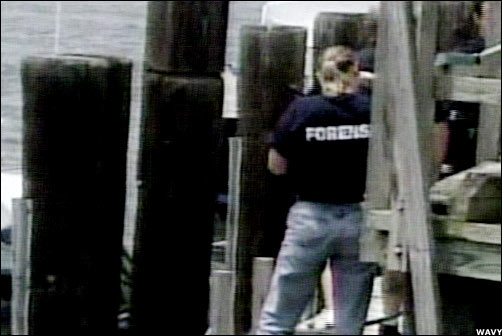
William McGuire's remains were discovered in three suitcases in
the Chesapeake Bay the month after
he was last seen alive. The first, found floating in the bay by a
fisherman, contained McGuire's legs.

The second, discovered by a scientist walking on Fisherman's
Island, contained
William McGuire's upper body.

The third suitcase, pulled from the bay water, contained William
McGuire's lower torso.
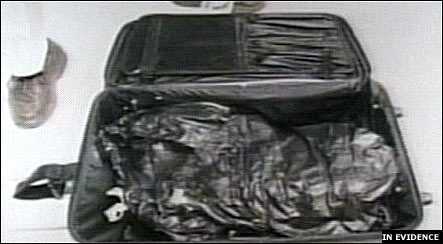
McGuire's remains were wrapped in black trash bags that
prosecutors claim are identical
to ones Melanie McGuire used to dispose of her husband's clothes.
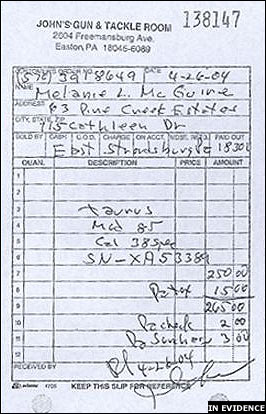
A receipt introduced in evidence shows Melanie McGuire's purchase
of a .38-caliber
revolver on April 26, 2004, two days before her husband disappeared.
He was shot by a .38-caliber weapon.
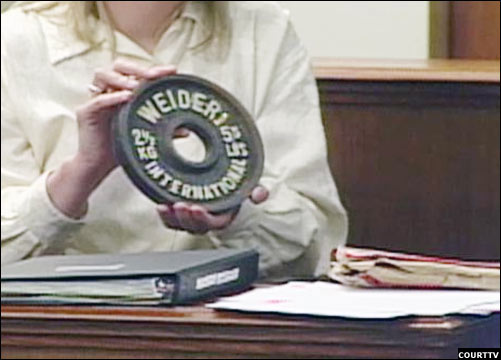
The Fisherman's Island suitcase contained a 5 ½-pound free
weight.

Prosecutors contend William McGuire was shot to death in the
couple's Woodbridge Township
rental apartment. A neighbor testified that she did not hear
gunshots or a power saw during
the period the murder and dismemberment allegedly occurred.
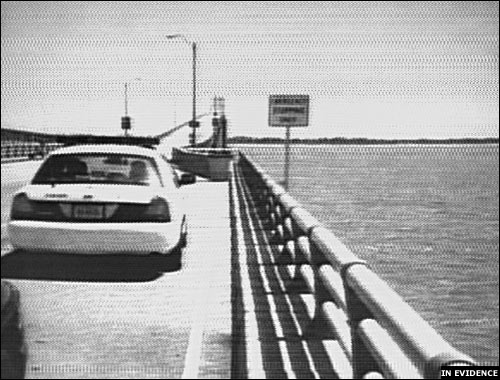
Prosecutors introduced as evidence this police photo of a
pull-off area on the Chesapeake
Bay Bridge. A detective testified that the guardrail was 31 inches
high, an inch higher than
the largest suitcase carrying the victim's remains.
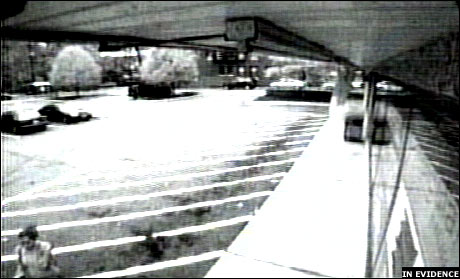
Is the figure at the bottom left Melanie McGuire? Prosecutors say
this photo shows the
nurse entering a pharmacy to buy an American Express gift card later
used to express
mail a package to prosecutors. The package contained a letter
suggesting McGuire
was being framed for murder.

Prosecutors also introduced what they said were similarities
between garbage bags from
McGuire's home and those used to dispose of the victim's dismembered
remains. Two
experts said matching patterns and dye lines in the bags prove they
were manufactured
in the same factory and on the same production line.
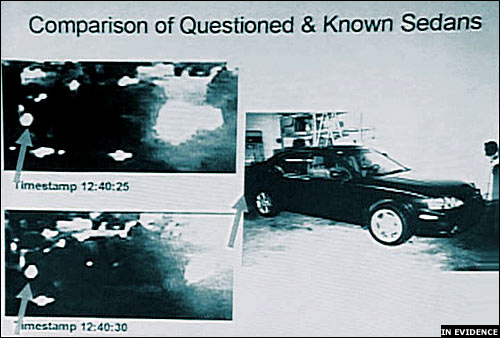
An FBI agent who specializes in video analysis testified that a
grainy surveillance tape of
an Atlantic City motel parking lot shows an SUV pulling in after the
victim's sedan. She
said the SUV shared certain characteristics with the defendant's
Nissan Pathfinder.
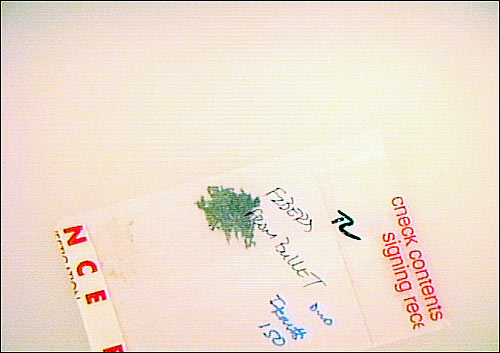
The medical examiner said a "fiber wad" was attached to the
bullet in the victim's chest cavity.
Prosecutors say it is proof the victim was shot through a
green-and-white throw pillow, but the
defense has noted the green fibers do not match the upholstery on
the green velvet living
room set in the McGuires' townhouse.
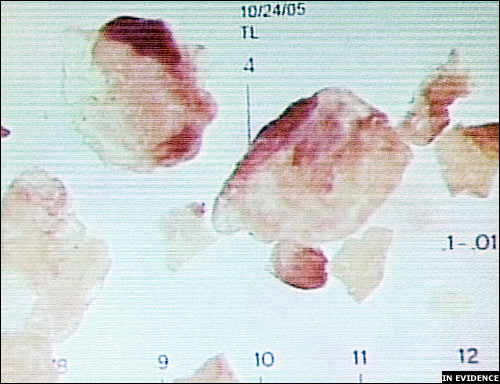
Tiny pieces of flesh were found on the floor mats of William
McGuire's sedan. A medical
examiner said microscopic analysis showed the material was not
sloughed off through
normal skin cell death, but removed through disease or trauma.
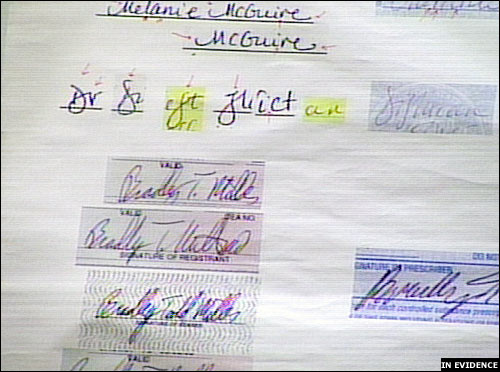
A forensic handwriting analyst said the signature of Dr. Bradley
Miller, McGuire's lover, was
forged on a prescription for chloral hydrate obtained the last day
the victim was seen alive.
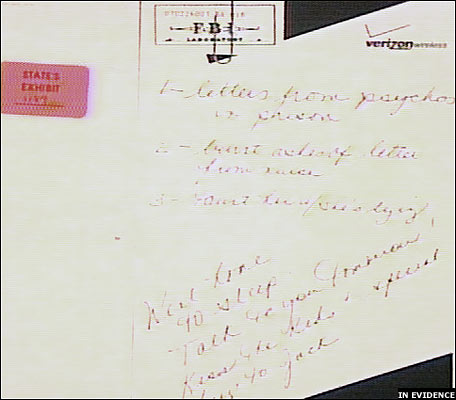
The victim's sister, Cindy Ligosh, acknowledged collaborating
with her brother to write
this list of ways
to get back at their sister, who they felt was
complicating the settling
of their mother's estate.
The list is similar to the "set her up"
note prosecutor's
accuse Melanie McGuire of fabricating.
Ligosh said she and her
brother were joking
when they discussed ways to hurt their sister,
including telling her
they no longer
believed her claims of childhood molestation.

















